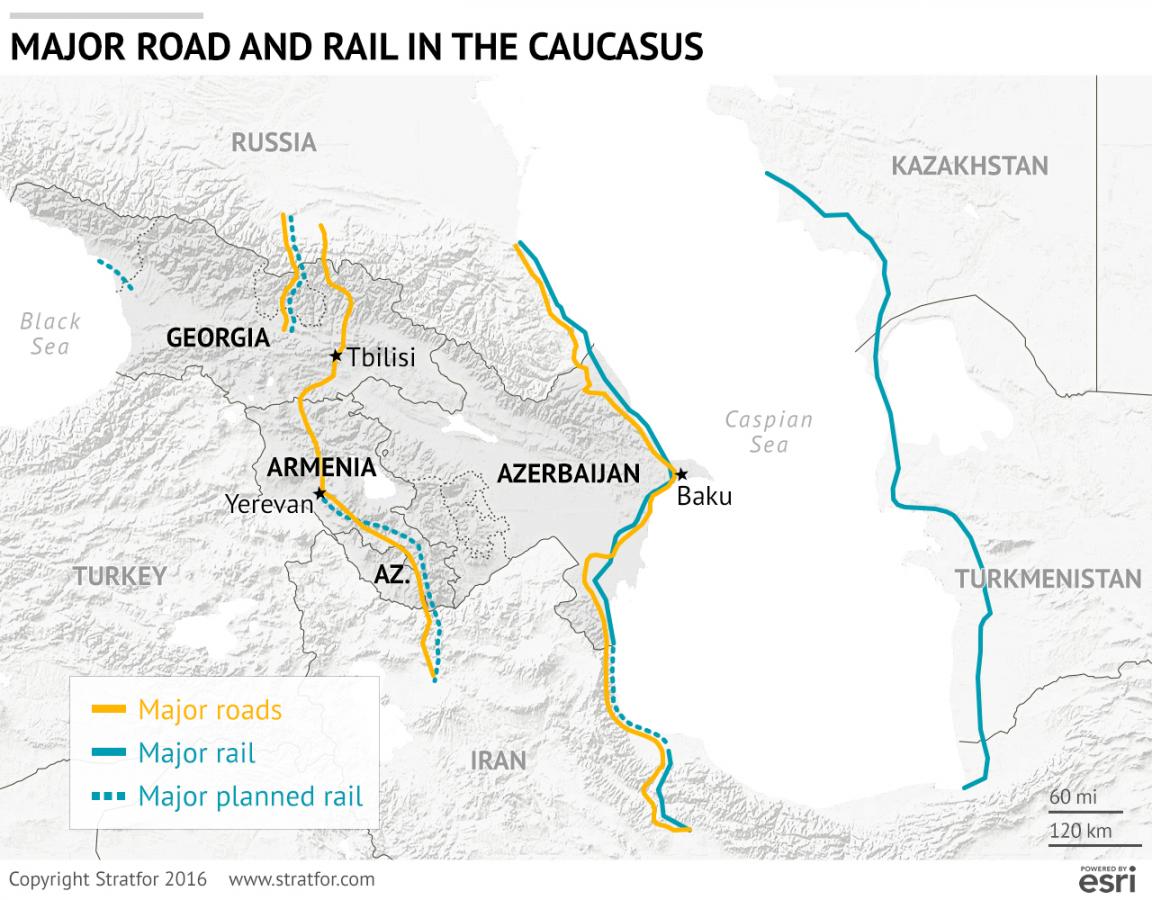Russia wants to expand its transit networks south to Iran, but doing so will not be easy.
For the Russians, no geographic barrier has ever proved as daunting as the Caucasus Mountains and few of the Caucasus transit states could be considered Russia’s friends. These factors will make it difficult for Russia to build infrastructure that transits the region uninterrupted, but in the end, Moscow and Tehran will likely work together to overcome the significant obstacles in the Caucasus and curb the presence of other major powers in the region, according to American publisher and global intelligence company Stratfor.
So far, Russia has managed to build two roads through the South Caucasus to Iran. The first runs along the Caspian Sea, through Dagestan and Azerbaijan, while the second follows the Georgian Military Road through Jvari Pass in the Caucasus Mountains.
However, Russia has actively sought broader connections to Iran over the past few years. One solution was to lay down rail lines that extend southward from Russia, down both sides of the Caspian Sea.
In late 2014, the Russian railroad system was connected to Iran’s in this way, with links that passed through Kazakhstan and Turkmenistan.
Iran is still building the Qazvin-Rasht line on its Caspian shore, directly connecting to the Iranian city of Astara on Azerbaijan’s border. When complete, the line will link Iran’s northern rail branch to the rail network in Azerbaijan and onward to Russia.
With transit states hindering Russia’s use of road and rail, Moscow has begun to widen its search for alternative routes. One possibility is a road leading from the North Caucasus to the Georgian breakaway territory of South Ossetia before connecting with the important East-West Highway, which links Azerbaijan to Georgia’s Black Sea ports.
Another would be to build 160 kilometers (about 100 miles) of railroads between Alagir, in the North Caucasus, to Gori, in Georgia. Each of these options would enable Russia to reach the railroad system of every South Caucasus country using the shortest and quickest routes available.
The final possibility is a railroad through Abkhazia, another Georgian breakaway territory.
In October 2015, Russia finished reconstructing part of the rail line, which now extends to the territory’s demarcation line with the rest of Georgia. Abkhazian officials have hailed the event as a precursor to the railroad’s full restoration, but given Moscow’s support for Georgia’s breakaway territories, it is highly unlikely that Tbilisi will ever agree to allow Russia to follow through with this plan.
But neither Moscow nor Tehran has backed down because of this opposition. As completed and ongoing projects in Abkhazia, South Ossetia and Azerbaijan show, both Iran and Russia appear willing to work together to try to find partial solutions to the problem of securing reliable transit in the Caucasus.


